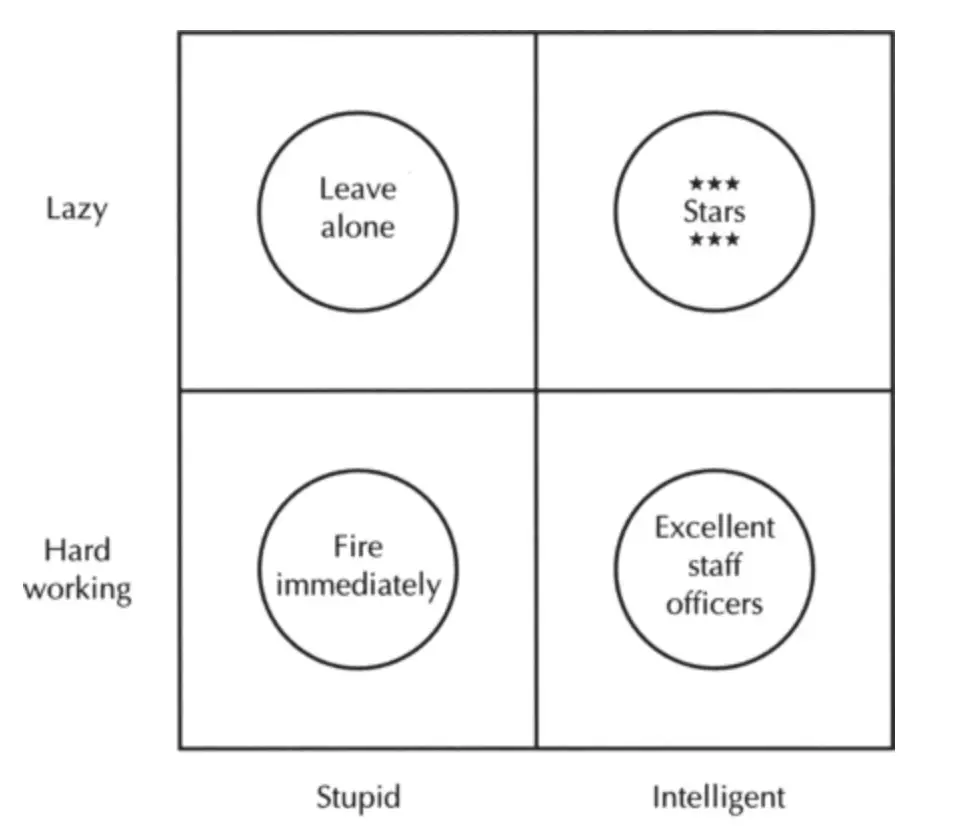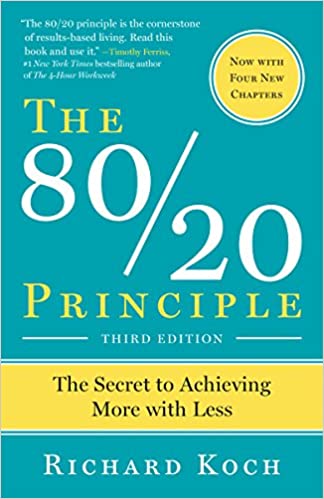Dear daughter,
Have you heard about the 80/20 principle? Today I want to summarize a book with that title written by Richard Koch.
The 80/20 principle is also called the Pareto law.
Why you should care about this principle?
It can help you achieve a lot more with less effort. Great! Isn’t it?
It can substantially increase your productivity, efficiency, and personal happiness. I already summarized a book to you that show lessons from the happier people in the world. There you can find what to do. The 80/20 principle tells you how to do it efficiently, so you can achieve the things you want to achieve sooner and therefore, be more satisfied.
This principle has been used (and is still used) to increase the profitability of companies. Yes, you can also use it to increase the profitability of your side hustle. By using the principle, you can also increase the number of services you give, and even better, the quality of the services.
Hope by now if you are not convinced you should use it, at least you are intrigued.
So, let’s see what this principle is about.
What is the 80/20 principle?
“The 80/20 Principle asserts that a minority of causes, inputs, or effort usually lead to a majority of the results, outputs, or rewards.” Richard Koch.
The meaning of the 80/20 in the name of the principle is usually interpreted literally as the 20% of what you do gives you the 80% of the results you achieve.
However, not always is 80/20, and not always the total is 100. Sometimes, 5% of your effort brings 99% of your results.
The important thing here is to follow the definition of the author. You can do that by understanding that most things you achieve in a certain area are caused by a minority of your effort.
According to the book, this principle has been validated in business. 20% of the products account for 80% of the revenue. 20% of the customer accounts for 80% of the revenue.
Here are more examples:
- “In society, 20 percent of criminals account for 80 percent of the value of all crime.”
- Twenty percent of motorists cause 80 percent of accidents.
- “Twenty percent of those who marry comprise 80 percent of the divorce statistics”
Are you already interested in the topic?
Here is one example of how the principle works in our lives:
- 20% of what you do, brings you in 80% of the results.
Think about it. What do you do at work, at home, or in any environment, and what are the things that actually create real value or bring a real result?
Please think about it and tell me later.
How to think 80/20?
In this chapter, the author shows us how he applied the principle in his life.
The author discovered when he was studying that by analyzing past final exam papers, he can answer at least 80% of the questions with knowledge of 20% of the topics the exam was supposed to cover. He also mentioned that the examiners can be more impressed by a student who knows a lot about a few topics, than by students who know little about everything. Sounds familiar?
This way, the author managed to be very efficient at studying.
Another example that the author gives here shows the difference between employee and employer. At this point he asked himself the question: are you working to make your employer rich or is it the other way around?
I’ll leave it here so you can read the book and find all sorts of examples about how you can apply this principle in your life.
Now, I’m going to apply the 80/20 principle and skip the whole Part 2, which has six chapters.
Part three: Work less, earn and enjoy more
Work less and earn more? Really?
Yes, my daughter, really!
Think for a moment that you trust the 80/20 principle applies in your life in a similar way that applies in business (there is proof of it).
If this principle is real, using simple logical reasoning, all you must do to earn more is to do more of the 20% that gives you the 80% of the results.
Simple, isn’t it?
How to start?
First, you need to identify what is the 20% of the things you do that give you 80% of the results.
After that, you just must start doing more of that 20% and doing less of the 80%.
There is another author that wrote about this principle (and many other things). From him I learn the following:
- Calculate how much money you make per hour.
- Every time you are going to do a task, ask yourself how much you can pay to someone else to do that specific task. If what you can pay is less than what you make at the same time, then you should pay someone else instead of doing it yourself. This will free your time to do more of the 20% that really brings 80% of the results. If you follow you might find yourself under 10%/90% or better.
- Something else to do is: at any time ask yourself, what should I be doing now that contributes more to my goals. Yes, you need to have goals. I told you this a long time ago. Goals will guide you in the right direction, to achieve what really matters to you, not to someone else.
- Another question that helps is this one: if I have to leave the town today, what is the single most important thing I must do that no one else can do for me if I’m not here?
When you do some of the above, you will quickly pick up what are the things in your 20%.
After you identify them, just do more of them and track the results.
Then, please let’s talk about the results. I want to hear your results and how you are applying this principle. At that stage, I’ll also tell you how I’m applying it.
Chapter 13 of the book is about how to deal with people according to what they do. Here the author shows a matrix (see the picture below) and gives a lot of insights on how to be successful in your career.

Interesting, isn’t it?
The people suited for the higher positions are the lazy and intelligent ones. Don’t let this example confuse you, my daughter. Some of them are lazy but they are high achievers. They might be lazy because they only do things that fall into their 20%.
The author gives the following 10 golden rules to achieve career success:
- Specialize in a very small niche; develop a core skill
- Choose a niche that you enjoy, where you can excel and stand a “chance of becoming an acknowledged leader
- Realize that knowledge is power
- Identify your market and your core customers and serve them best
- Identify where 20 percent of effort gives 80 percent of returns
- Learn from the best
- Become self-employed early in your career
- Employ as many net value creators as possible
- Use outside contractors for everything but your core skill
- Exploit capital leverage
So, what do you think? Are you already following any of these “rules”? Do you want to try any of them? All of them?
My daughter, notice that the book is rich in examples. Here I just want to give you a taste of what you can find on it. I encourage you to read the book so you can get rich insights on how to apply the 80/20 principle in all areas of your life.
Love you, Dad.
I share the letters I write to my daughter so more people can benefit from them. If you want to buy this book, you can check it out on Amazon using this link.

